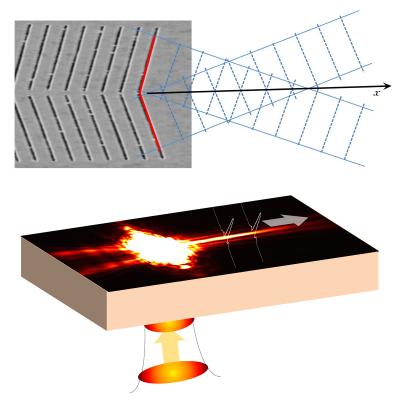Led by Harvard University, a global research team has showed a new type of light beam that can propagate without external scattering.
 Needle beam
Needle beam
The beam travels in a narrow and controlled path. This "needle beam" can minimize signal loss for on-chip optical systems and also facilitates the creation of a more powerful microprocessor array.
Applied physicists at Harvard School of Engineering and Applied Sciences (SEAS) and the France-based Laboratoire Interdisciplinaire Carnot de Bourgogne, CNRS developed and characterized this needle beam that is capable of traversing through the interface of gold and air. The findings were published August 31 online in the journal Physical Review Letters.
The needle beam has been created from ‘surface plasmons’, a special class of quasiparticles that can move densely within a metal surface. The metallic stripes carrying surface plasmons can be effectively used in microprocessors instead of standard copper electrical interconnects for efficient ultrafast on-chip communications.
The development of such optical interconnects has been challenged by ‘diffraction’, a phenomenon wherein the entire waves spread in a lateral direction during propagation, thereby minimizing the portion of the signal to be detected.
Technically named ‘cosine-Gauss plasmon beam’, this so-called needle beam propagates with a nanostructured metal surface in constrained spaces.
The theorized phenomenon was tactically demonstrated by three researchers. Two sets of grooves were designed into a gold film that was plated onto a glass sheet’s surface. These tiny grooves meet at an angle giving rise to a metallic grating. Upon laser illumination, the device generates two tilted, plane surface waves that interfere resulting in non-diffracting beam.
The research team envisions that this finding will facilitate further development of microprocessors that are versatile and energy-efficient.